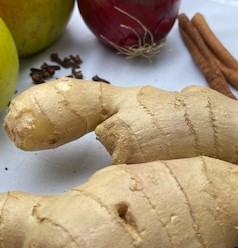There's nothing better than a Devon cream tea - scones, strawberry jam and dollops of clotted cream.

Here's my basic scone recipe, one that I use all the time!
450g self-raising flour
pinch each of baking powder and salt
50g caster sugar
110g butter, diced
1 egg, beaten
50ml double cream
200ml milk
To glaze - 1 egg beaten with 1 tbsp water
Preheat the oven to 180ºC and line two baking sheets with greaseproof paper.

Sieve the flour, baking powder, salt into a bowl and stir in sugar. Rub in the butter until it resembles breadcrumbs.
I have a distinct memory of my grandmother guiding me as a child to carefully lift the cold butter cubes out of the flour and rub it between my fingertips. "Like the gentle rain falling from heaven" she used to say.
Add the egg, cream and enough milk to form a soft dough. Put on to a floured surface and roll out lightly to about 20mm thick. Cut out shapes with a medium-sized circular cutter and place on to the baking sheets. Brush the tops with the egg glaze and bake for 15-20 minutes.
If you want to make brown scones, omit the sugar and substitute the amount of flour to half brown and half plain white. Increase the baking powder to a heaped teaspoon.
And for a savoury version, check out my cheese and chive scones here ...
























